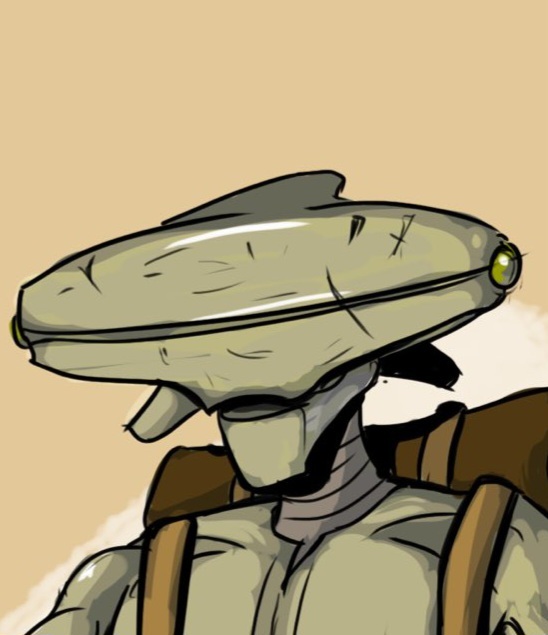If surviving humans lost 50% of their gut bacteria, that means that those snapped away left 50% of their gut bacteria behind.
More gut bacteria for the rest of us, that’s what I say!
or 100% of the 50% that are destroyed are the gut bacteria in the humans etc that got snapped
The alternative is even more disturbing: snapped humans leave behind a cloud of poopy gut microbes.
What do you think that dust was?
The other 50% of humanity then dies of salmonella and dysentery
That’s not how it worked. He killed 50% of gut bacteria by killing 50% of the hosts.
Depends on whether “50% of all life” means half of the contiguous lumps of cells we call “creatures” or simply half of all living matter.
You literally see individual people dissolving, and others being unaffected. How is this unclear?
Haven’t seen it, I’m just reading about it here, I’m not even sure who Thanos is LOL.
Source? I’m pretty sure random bacteria would still be around a while if your brain activity went to zero.
But that’s not what happened. They literally disappeared, along with the gut biome
Your biome is specialized to live inside of you. They are not identical to wild organisms.
The source is Thanos supposed IQ score.
This is refuted by his approach to only cut out half the tumor.
½?
Yeah my interpretation is that half your cells would die - didn’t even consider that if half your brain cells died it would probably kill you instantly.
In reality, since it was more random, some poor soul would have their whole biomes destroyed, and just be rekd.
That would be incredibly unlikely. Due to the huge number of gut microbes, the chance to even lose 5% off of the median, even with billions of trials, is functionally zero.
Maybe in your gut biome, but mine is just two or three really, really large bacteria
So, what are their names?
What are their names, and do they bite?
Have you ever been prescribed a wolf?
That just sounds like the gut biome version of a spworm.
To expand a little:
For a much smaller sample size of just 1 million, the probability to lose just 1% off of the median is basically zero.
WolframAlpha doesn’t even bother to calculate the exact result and just rounds it:
https://www.wolframalpha.com/input?i=P[490000+<+X+<+510000]+for+X~B(1000000%2C0.5)
Yeah, I was trying to compute the “ballpark” of the odds, but it’s actually hard to do because of how astronomically improbable it is. Even computation systems that are designed to compute rather big/small numbers (think 100,000,000^1,000,000 big) fail.
Here’s another example: If a human only had 1,000 gut microbes, the chance that over 900 of them get snapped is 1 in ~10^162 [WA]. (This was roughly the biggest number I could get WA to yield a non-zero answer for a >90% snap.)
Now if you do that for every human on earth, the probability is still essentially zero. [WA]
When you consider that humans don’t have 1000 gut microbes, they have over 10 trillion, it’s just mind bogglingly improbable.
I’ve found a proper approximation after some time and some searching.
Since the binomial distribution has a very large n, we can use the central limit theorem and treat it as a normal distribution. The mean would be obviously 500 billion, the standard deviation is √(n * p * (1-p)) which results in 500,000.
You still cannot plug that into WA unfortunately so we have to use a workaround.
You would calculate it manually through:
Φ(b) - Φ(a), with b = (510 billion - mean) / (standard deviation) = 20,000 and a = (490 billion - mean) / (standard deviation) = -20,000 and Φ(x) = 0.5 * (1 + erf(x/√2))erf(x) is the error function which has the neat property: erf(-x) = -erf(x)
You could replace erf(x) with an integral but this would be illegible without LaTeX.
Therefore:
Φ(20,000) - Φ(-20,000) = 0.5 * [ erf(20,000/√2) - erf(-20,000/√2) ] = erf(20,000/√2) ≈ erf(14,142)WolframAlpha will unfortunately not calculate this either.
However, according to Wikipedia an approximation exists which shows that:
1 - erf(x) ≈ [(1 - e^(-Ax))e^(-x²)] / (Bx√π)And apparently A = 1.98 and B = 1.135 give good approximations for all x≥0.
After failing to get a proper approximation from WA again and having to calculate every part by itself, the result is very roughly around 1 - 10^(-86,857,234).
So it is very safe to assume you will lose between 49% and 51% of your gut bacteria. For a more realistic 10 trillion you should replace a and b above with around ±63,200 but I don’t want to bother calculating the rest and having WolframAlpha tell me my intermediary steps are equal to zero.
Whoa, good work! I think I’m going to have to go over this a few times to grock how it works, especially the Φ(b) - Φ(a) bit. My stats textbook has a bit too much dust on it. ;)
deleted by creator
Losing 50% of your gut bioma will be fixed in an hour or two.
Yeah, yeast doubling rate is around 90 mins in optimal conditions, I would assume the rest of the microbes in your gut would have a very similar rate and they would be well adapted to those conditions.
Fewer than 50% of the cells in “your body” contain your own DNA.
There are many more bacteria, since they are much much smaller than “your own” eukaryotic cells.
Where you end and your “gut flora” begin and end is not as clear as you might first believe.
Yeah but I thought about this I realized that whenever somebody vanished from the snap it would leave behind a slurry of gut microbes and a (different looking) dust from all of the skin mites, microbes, and stuff that just live all over the human body. Meaning the aftermath would have been even messier.
Maybe that’s exactly what the dust was.
Then it should have been goopier lol
The snap was always the dumbest part of the entire avenger series. Let’s say for example, you have a bunch of deer that are eating the forest bare, so you let hunters kill half of them… Then what happens next? You have the exact same problem in a few years. The snap solves nothing.
Also if you can snap your fingers and do this, why can’t you snap your fingers and make twice the food supply?
The snap is just stupid, even in a world made-up physics-defying superheroes.
To be fair, it made slightly more sense in the comics, though still batshit. In the comics there was no noble purpose like they tried to shoehorn in for the MCU. IIRC, Thanos was literally doing it to impressed Death (the cosmic entity) to gain her affection.
makes more sense for sure
Even worse than that. 50% of all life dies, right? That’s 50% of the plants too. If you know anything about food chains, taking 50% of everything leaves the top of the chain massively overloaded.
So will bacteriophages and viruses be snapped as well? Does it mean that scientists can utilize the Thanos snap to determine for good whether viruses are alive?
he would have to snap his fingers infinitely many times to kill everyone so he is not that powerful
That’s an interesting question as to whether the infinity gauntlet rounds down.
Like, if there were 3 survivors of a species and thanos snapped the universe, does the gauntlet round up to 2 survivors, or down to one?
I thought it was just an instantaneous, every living thing has a 50/50 chance of living or dying. No rounding, no species specific exceptions.
So that means that since bacteria and the like outnumber us by orders of magnitude, statistically speaking, multicellular life would be wiped out completely.
No, they reproduce pretty quickly. Wipe out 50 % of the bacteria in your body, and they will recover in a few hours.
That’s not how probabilities work. Every lifeform flips a coin. It doesn’t matter what everyone else got, you still have a 50/50 chance.
or down to one and a half?
Oh, see, it’s a cartoon so it’s not real.
Hope this helps.
Oh, see, it’s called having fun.
Hope this helps.
Does not compute
Any chance you’re a lawyer? It would make more sense to want to hammer out the precise rules of the fake universe if you’re a rule lover
Any chance you’re a lawyer?
Physicists come pretty close too, and guess where you are
At the top it says “new”, so I am in the new section!
in the new section of Science Memes, A place for majestic STEMLORD peacocking…
It’s bullshit space magic, it probably considers what Thanos thinks of as life. Why it snapped the birds is a different plot hole altogether, because it means he snapped away half the food, too.
50% fewer people working all critical sewer infrastructure, too
50% less financial analysts too :( imagine the economic crisis that would cause.
If you want to be really technical the survivors would also lose 50% of all the other cells in their bodies and probably wouldn’t live another few months. I’m not a doctor so I won’t try to put a number of weeks, days or hours on it, let alone argue that number, but hey knock yourself out.
/edit based on another comment - even if you could stay physically intact with half the cells in your body dying, half of your brain cells dying would probably kill you instantly.
If you include bacteria, then probably no human died from the snap. There are significantly more of them
That’s not how percentages work
Moreover, that’s not how probability works in independent events.
It’d be like saying “I flipped coin A 1 billion times and got half a billion heads, so now that I’m flipping coin B 100 times, I probably won’t get any more heads.”
It should be fairly obvious that you can say the exact same statement about tails, and get a completely contradictory statement.
Say, there exists 2 humans and 98 bacteria. Consider all cells of a human one life.
50% of ALL life doesn’t care which species the life is, and therefore there’s a chance that 50 bacteria die. The probability of that happening is 98C50 / 100C50 = 98! 50! 50! / (100! 50! 48!) = (50)(49) / ((100)(99)) = 0.247
For my previous argument, I did not actually do the math. Now that I have done a little bit, the probability seems to converge at 25%
Obviously, this is based on the interpretation of “all life”. For my interpretation, “all life” includes every life in a single set, and apply the 50% snap to that. For some others however, it may be interpreted as each species in their own set, and the 50% snap is applied on each set individually.
But if there are 7 billion humans and n bacteria, and 50% of them are snapped, wouldn’t approximately 3.5 billion humans and n/2 bacteria be snapped?
The problem is the ambiguity of the statement. Is it 50% of each species? Or is it 50% of all life as one set?
If it’s the former case, then sure 3.5b humans and n/2 bacteria gets snapped.
But if it’s the latter case, we group all 7b and n bacteria into one set and snap half of them. This 50% can consist of 50% humans + 50% bacteria, but there’s also a chance for it to include 0% humans + 100% bacteria. Therefore, the amount of humans snap is a random variable instead of a constant.








